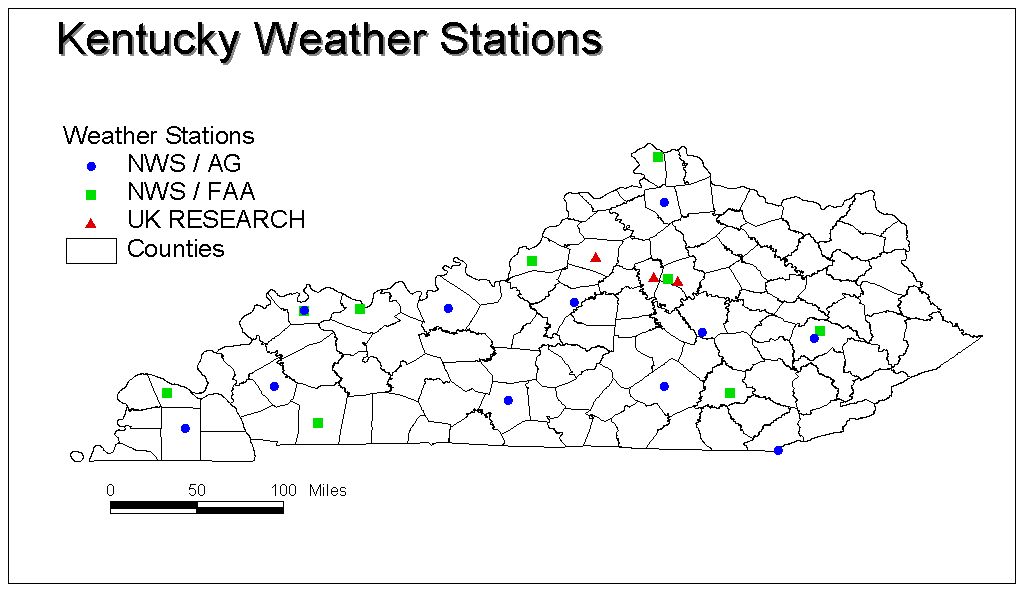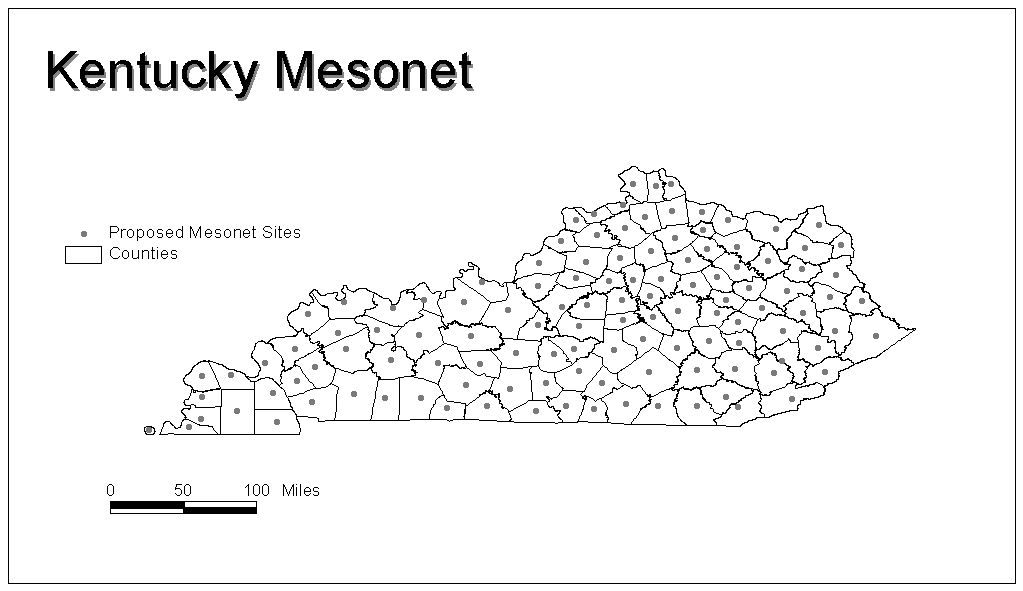![[Header Map]](/images/header.gif)
[Main] [About] [Updates/News] [Directory] [Message Board] [References] [Articles] [Links]
![[Header Map]](/images/header.gif)
![]()
[Main]
[About]
[Updates/News]
[Directory]
[Message Board]
[References]
[Articles]
[Links]


| A dense network of research-quality, real-time, automated environmental monitoring stations throughout the entire state usually at least 1 station per county. |
| Mesonet" is a combination of the words "mesoscale" and "network". |
| In meteorology, "mesoscale" refers to weather events that range in size from a few kilometers to a few hundred kilometers. Mesoscale events last from several minutes to several hours.Thunderstorms and squall lines are two examples of mesoscale events. |
| A "network" is an interconnected system. |
| Thus, a mesonet is a system designed to measure the environment at the size and duration of mesoscale weather events. |
| If used properly a mesonet can help save lives, save Kentucky taxpayers and businesses millions of dollars, educate the next generation, reduce energy consumption, and greatly contribute to many types of research projects across the state. These are only a few examples of things that a mesonet can be applied to. |
| -Agriculture: | Farmers, Extension Agents, Agriculturalist, etc. |
| -Weather Forecasting: | National Weather Service, TV Broadcasters, etc. |
| -Education: | School Teachers, etc. |
| -Emergency Management: | Emergency Managers, State Police, Fire Departments, Redcross, etc. |
| -Energy Industry: | Electric Companies, Gas Companies, etc. |
| -Transportation: | Kentucky Department of Transportation, Aviation, etc. |
| -Research: | Agriculture Research, Weather Research, Natural Resource Research, etc. |
| -Others: | Parks and Recreation for Outdoor Sports/Activities, Insurance Companies, etc. |
| This is only a small list of groups that can benefit from a mesonet. In actuality everyone's lives across Kentucky can be greatly enhanced by a mesonet. |
 Please send questions/comments about this web page to: emaxwell@ca.uky.edu
Please send questions/comments about this web page to: emaxwell@ca.uky.edu